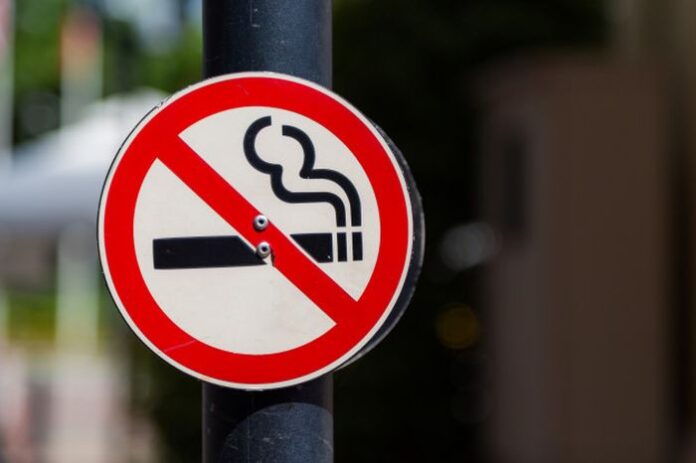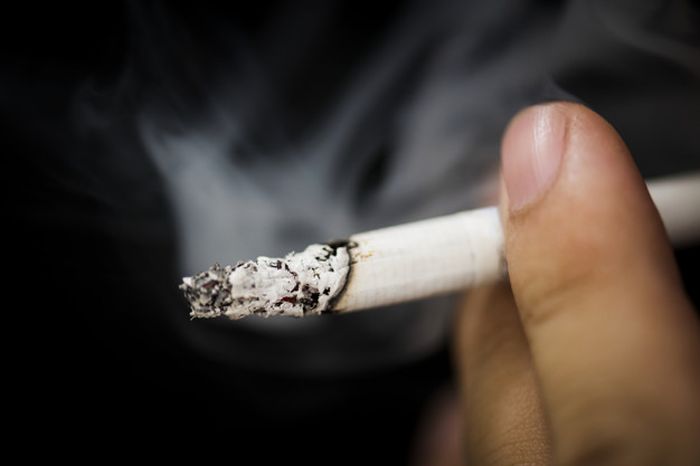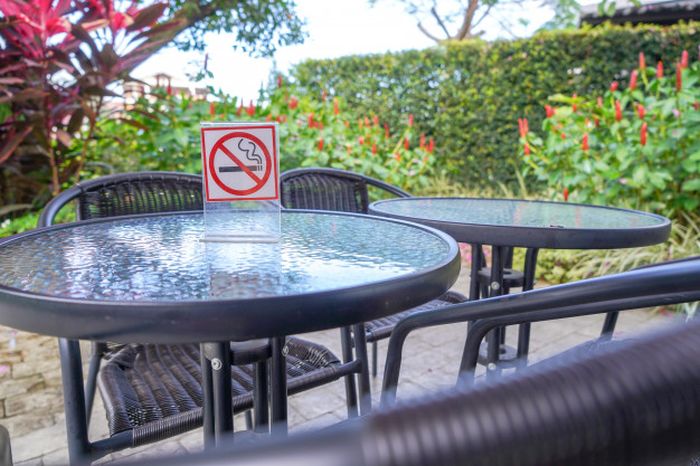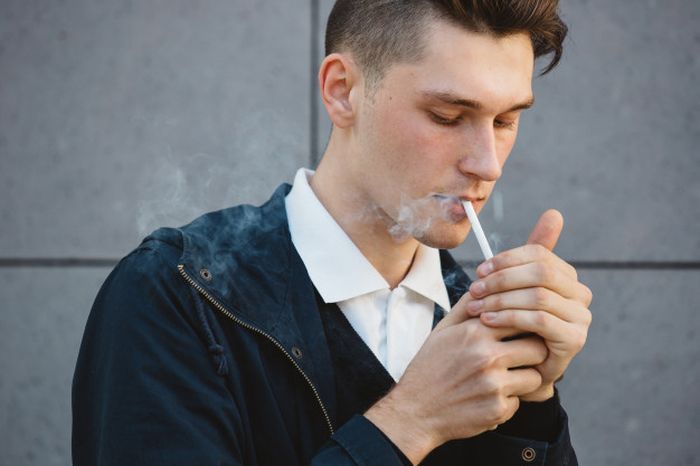
The world is finally coming to terms with the effects of smoking, with many municipalities banning smoking in public altogether, and almost all states banning smoking in restaurants, bars, and other venues. This decision comes from the understanding that second-hand smoke can be just as deadly as first-hand smoke, and non-smokers have the right to not be exposed to another person’s habit.
If you’re planning on traveling in the US as a smoker, you should know a few things about the laws regarding smoking in popular travel destinations. Beachfront towns, big cities, and other popular destinations are taking measures to reduce the impact of smoking on non-smokers’ health.
Here’s how some laws are changing, and why.
Why?

So, what’s the big deal, anyway? Why change the smoking laws at all? To better understand why many destinations are banning smoking in public places, let’s take a look at the numbers. Second-hand smoke is the cause of these new laws. Second-hand smoke is usually breathed in by non-smokers in close proximity to a smoker, exposing them to the almost 7,000 chemicals present in a single cigarette.
Non-smokers have a right to not be exposed to such harm, both in public places and in the workplace. Even most businesses have banned smoking on their grounds and are encouraging their employees to ditch the habit altogether. The bottom line is that smoking is a public health crisis. Here are some facts:
- Smoking causes about 480,000 deaths in the US annually
- Smoking costs the US nearly $300 billion per year
- 7% of all adults smoke cigarettes
Second-hand smoke has its own set of facts that might surprise you:
- Second-hand smoke costs billions in lost productivity in the workplace
- Second-hand smoke kills about 40,000 people per year
- There is no “risk-free” level of exposure to second-hand smoke. It is
- Just minor exposure can trigger a heart attack
- Second-hand smoke is more impactful and deadly in children
- About 35% of children in the US are exposed to second-hand smoke
The facts speak for themselves. Smoking is a destructive habit, and the impacts reach far beyond just the smoker. The decision to reduce or ban smoking in public places at popular travel destinations was made to keep people safe from the harmful chemicals in cigarettes.
Luckily, smoking is in decline as products like tobaccoless dip (as found on blackbuffalo.com), e-cigarettes, and nicotine replacement therapies take its place.
Bars and Restaurants

Most popular travel destinations have bans in bars and restaurants. Before the ban, you could visit a restaurant and get a “smoking or non-smoking” option. The trouble with this is that no matter how far apart you place these two sections, the second-hand smoke still pollutes the air quality in the restaurant or bar. In an enclosed space, the harmful effects of cigarette smoke are amplified, making it even more dangerous to be exposed to second-hand smoke. Furthermore, both guests and employees will be in a much safer ambient where smoking is banned. Besides that, people will feel much more comfortable without the smell of smoke which could stay on your clothes and hair.
Places like Los Angeles, Hawaii, Martha’s Vineyard, New York, Portland, Miami, and San Diego require that all bars and restaurants be 100% smoke-free. These are just a few examples; for a full list, go here.
Planes

Almost all commercial airlines have banned smoking in both airports and the planes themselves. If you thought smoking inside of a restaurant was bad, smoking inside of an airplane cabin is even worse. The enclosed space amplifies the effects of smoke, and cigarettes present the risk of causing a fire inside the cabin.
Essentially, smoking inside a plane puts everyone on the flight at risk. Fires can cause a plane to lose cabin pressure, and smoking inside the cabin means that everyone in the plane is exposed to deadly second-hand smoke. You won’t be able to catch a flight that allows smoking since the ban went into effect in 2000.
Hotels

Many hotels do still allow smoking in designated areas, and governmental guidelines specify what percentage of a hotel must be smoke-free. Since smoke can linger for days or even weeks and sticks to surfaces, sufficient cleaning is required so as to not expose the next tenant to harmful chemicals. Check with the regulations in your travel destination to see the laws pertaining to hotel smoking. Most municipalities require that at least 50% of a hotel be smoke-free, though some go as high as 75%.
Public Attractions

If you’re planning on visiting public beaches, museums, or other attractions, you’ll likely face a smoking ban. Since cigarette litter accounts for around 80% of the world’s plastic and paper litter, many beaches and other outdoor attractions are banning smoking altogether to preserve the integrity and beauty of the locations.
Traveling as a smoker can make your travel experience feel very limited. Banning smoking in public places is an effort to preserve non-smokers’ health and offer an incentive for current smokers to give up the habit.
Main Benefits of Smoking Bans

Many states introduced measures that are banning smoking in public areas such as public transport, buildings, clubs, sporting facilities, restaurants, skate parks, swimming pools, beaches, pubs, playgrounds, and many other places both in open and closed spaces. There are numerous benefits to this ban. Some of the most important are positive role to younger generations that are less likely to every light up a cigarette, in that case, improved public health, increased awareness of many health risks that you could get from smoking, improved awareness for the cleaner environment, and decreased chances for a fire. According to many scientists, there is no safe level of exposure to cigarettes, for both active and passive smokers.
Also, people who don’t smoke are at the same risk for developing various diseases if they are spending time in the company of active smokers just as those people.
Besides the fact that there are many benefits from smoking buns on public places for non-smokers, another great advantage is related to kids, their health, and smoking bans can help younger generations to avoid developing this bad habit. There are many negative effects of the exposure of smoke from cigarettes, such as various lung diseases, asthma, premature births, heart diseases, chronic diseases, diabetes, and many other health issues.
Conclusion

When it comes to restrictions and regulations related to smoking bans in the world, we can see a great difference between many countries. Because of that, you should know that some countries are much better for non-smokers, and those countries are Canada, Australia, Singapore, the USA, and Iceland. Also, many other countries recently introduced various measures to reduce the number of smokers and the possibility to smoke in both closed and open public areas. Moreover, most of these countries have a rate of adult smokers of only between 10-20%. On the other side, countries like Northern Macedonia, Czech Republic, Greece, Turkey, Serbia, China, Andorra, and many other countries have a big problem with the number of smokers, which is over 40% of adults in some of them.
While most of these countries have banned smoking in closed areas, it looks like it will need much more time until they reduce the number of smokers. However, with proper education of younger people, and regulations that will forbid smoking in any area where you could affect other people, we expect that the number of people who enjoy in cigarettes will reduce rapidly. The best solution for the reduction of smokers is to introduce measures that will forbid them to smoke in many public places. The United States is actively working on the reduction of people who are smoking for decades already, and we can see some great results, especially when it comes to the number of younger people who are using tobacco, which is falling each year.
















